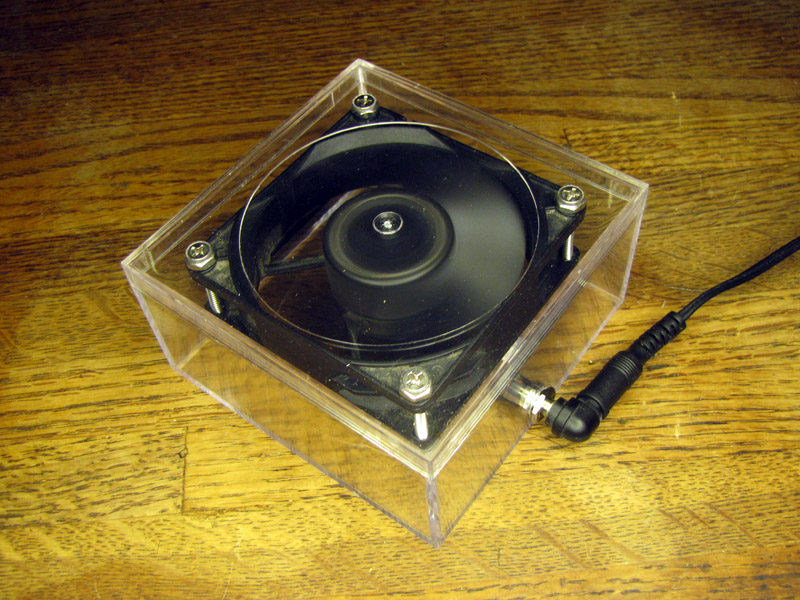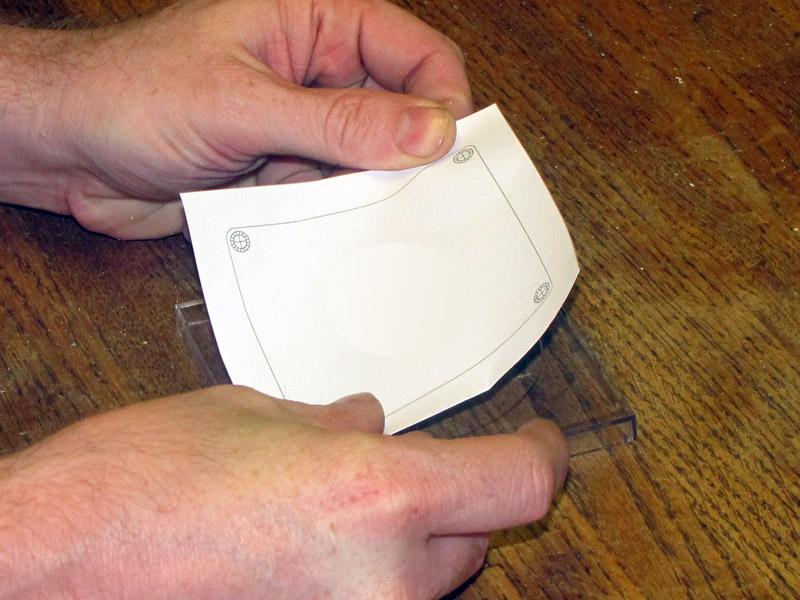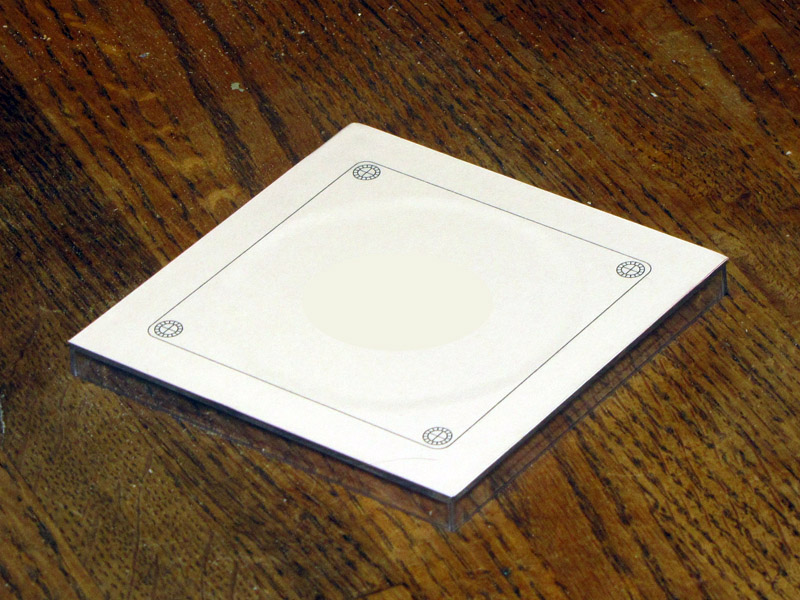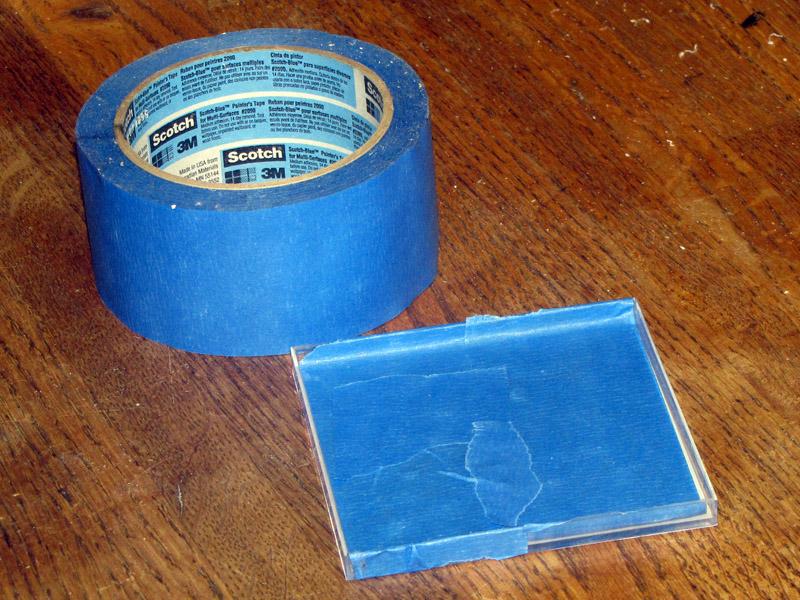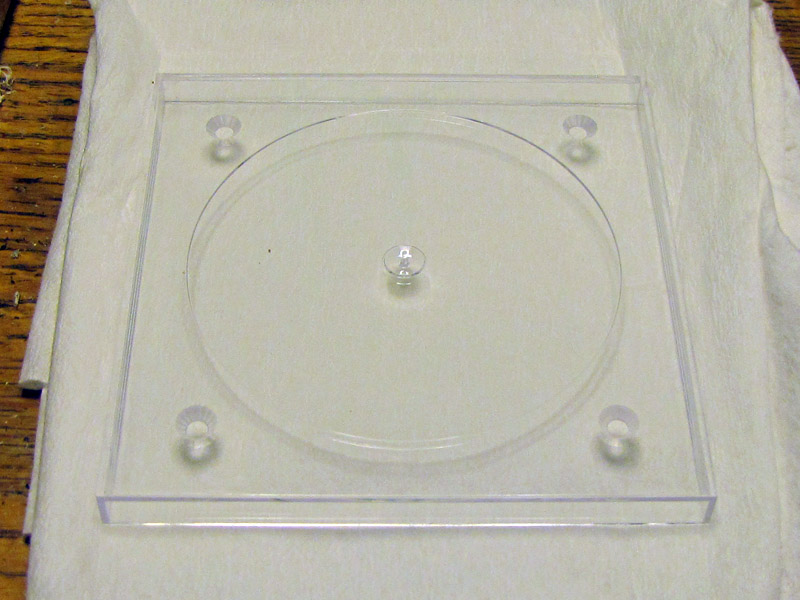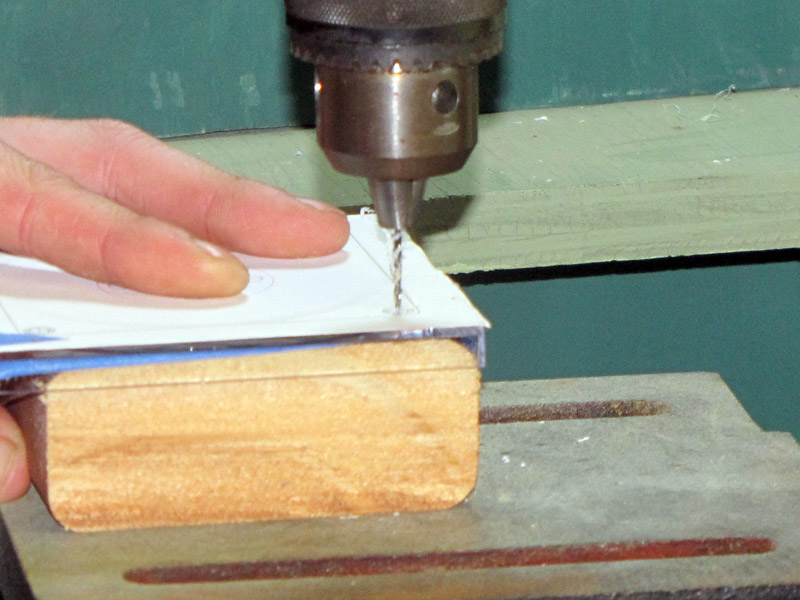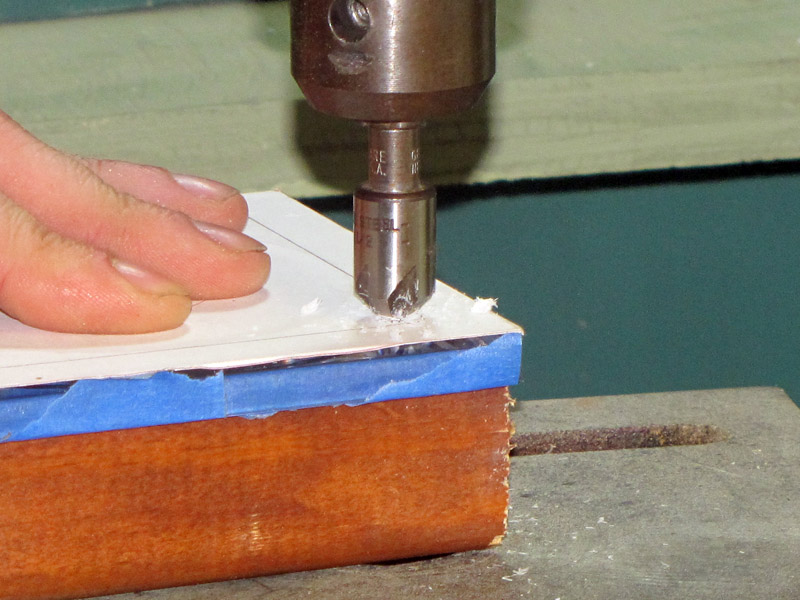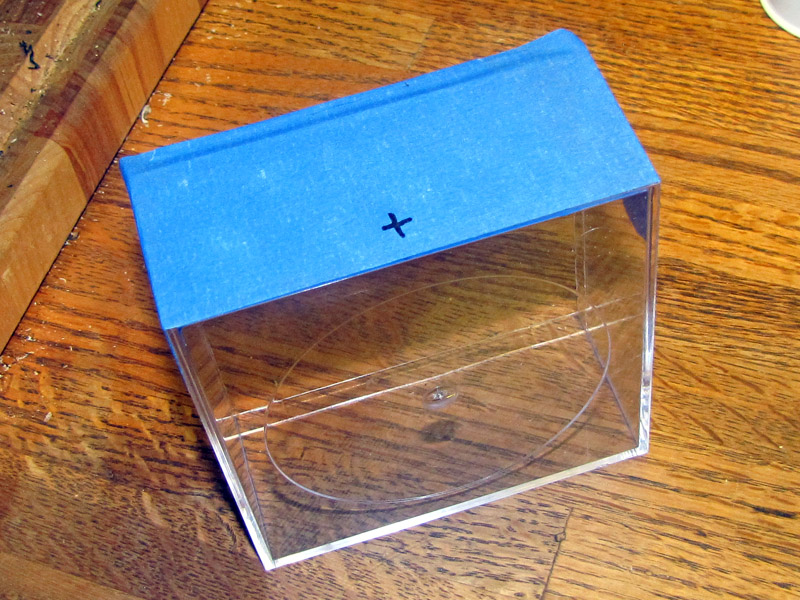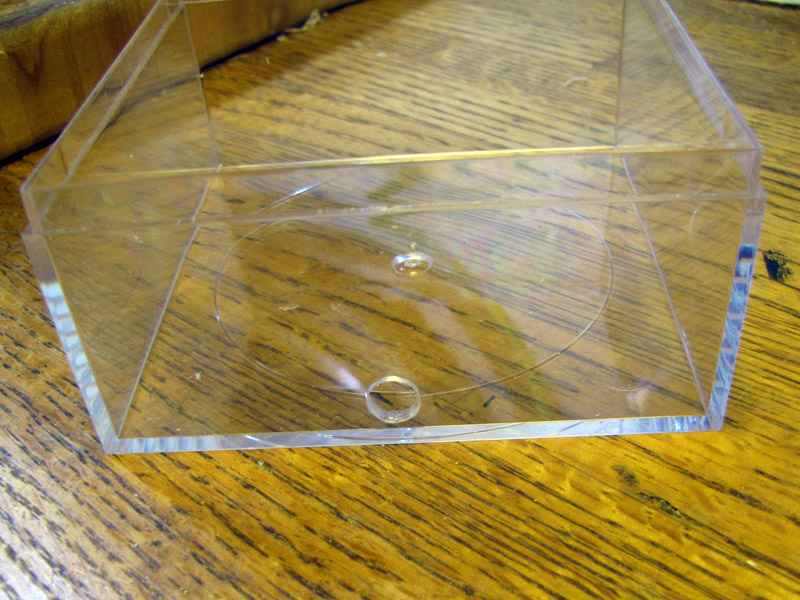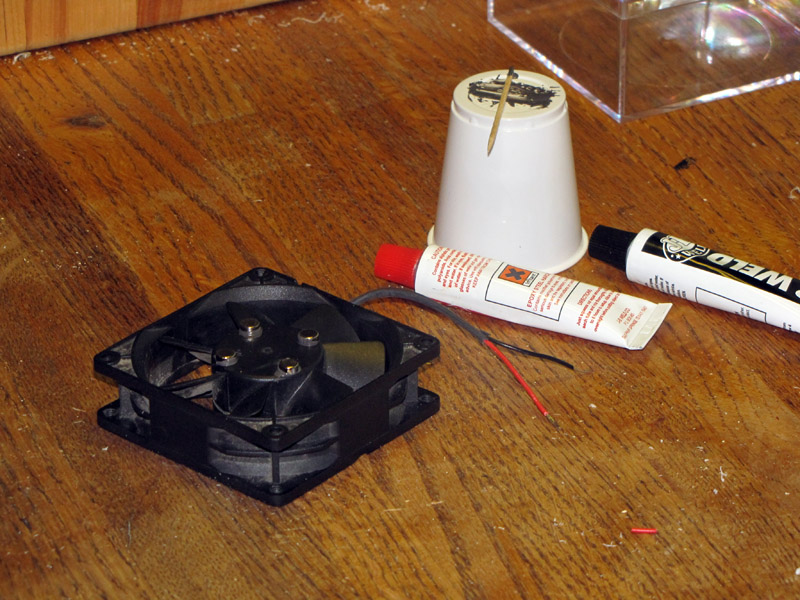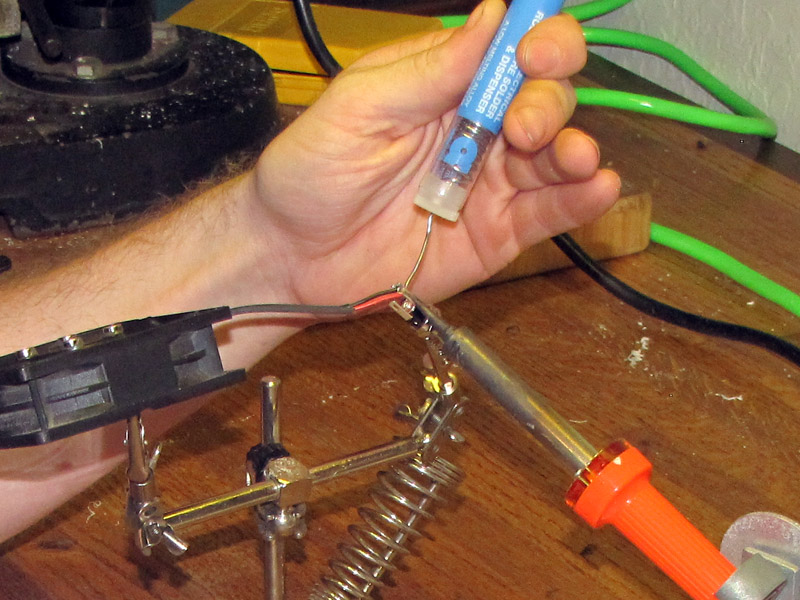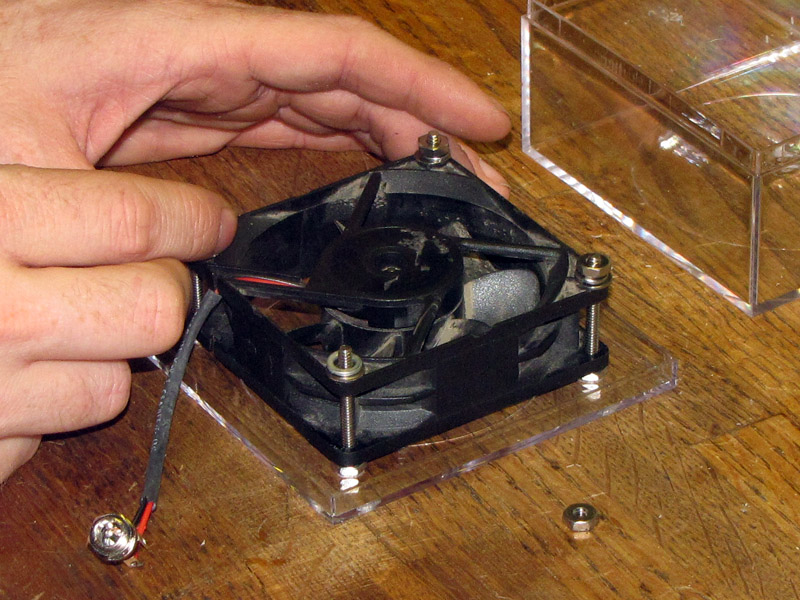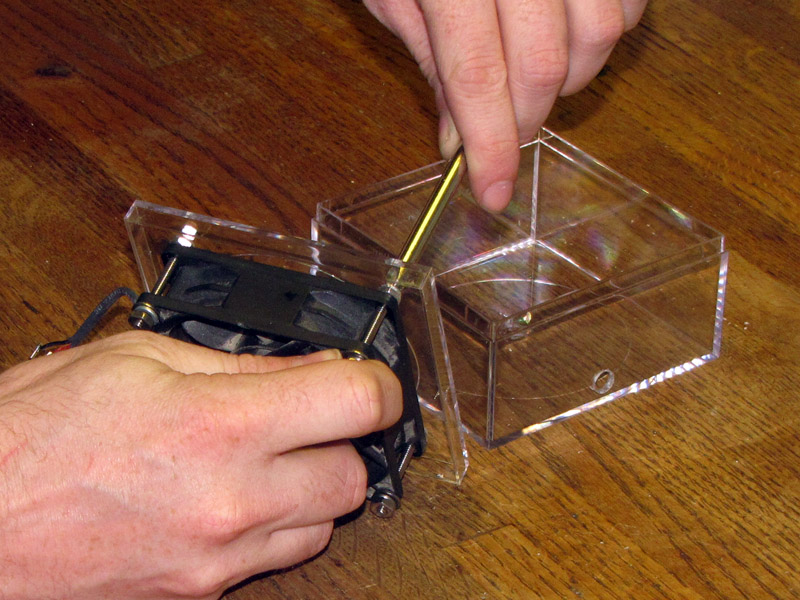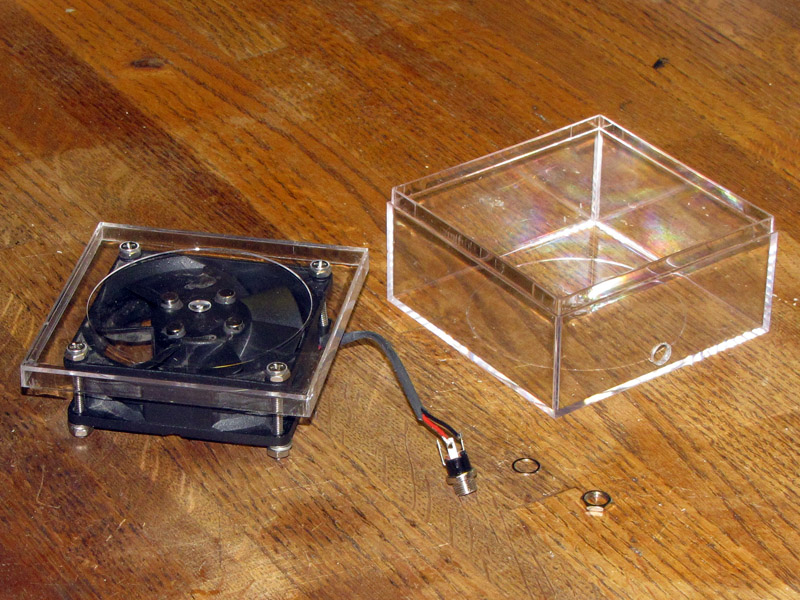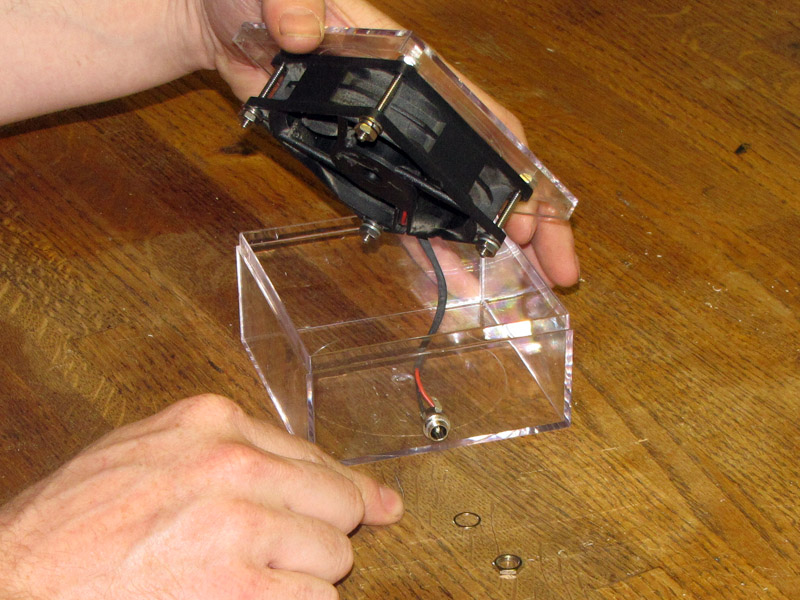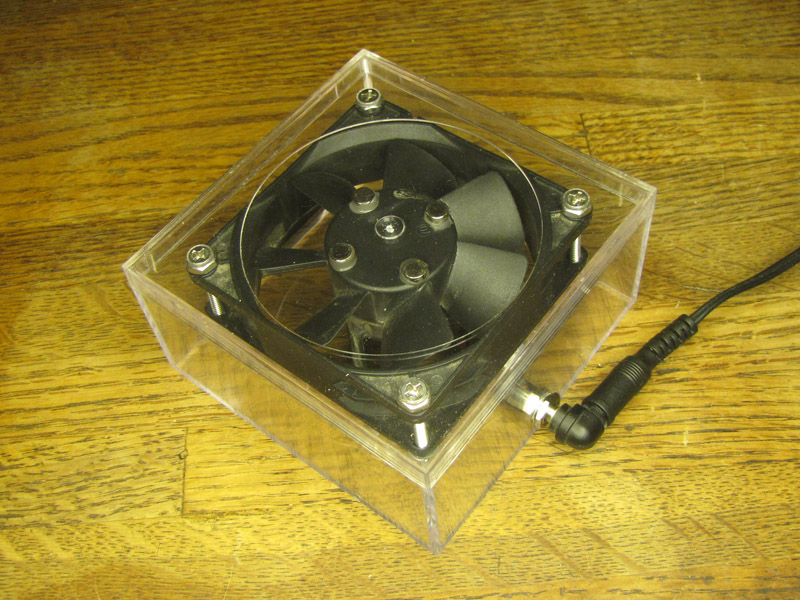Insert four flat-head screws into the countersinks in the lid, and position the lid top-down on your work surface so that the screw threads are sticking up.
Tighten a hex nut down onto each screw, against the inside of the box lid. These nuts serve both as spacers to provide clearance for the spinning magnets on the fan hub, and to take tension off the relatively fragile plastic of the box lid.
Set your fan in place, magnets down, on the screws. Check to make sure the magnets have sufficient clearance for the hub to spin freely.
Put a flat washer over each screw, then a split washer.
Thread a hex nut onto each screw, finger-tight against the split washers.
Pick the lid up, and, holding the screws still with a screwdriver, tighten the nuts, still using your fingers, until the split washers are compressed. You may use a small wrench, if necessary, but be careful not to overtighten.
